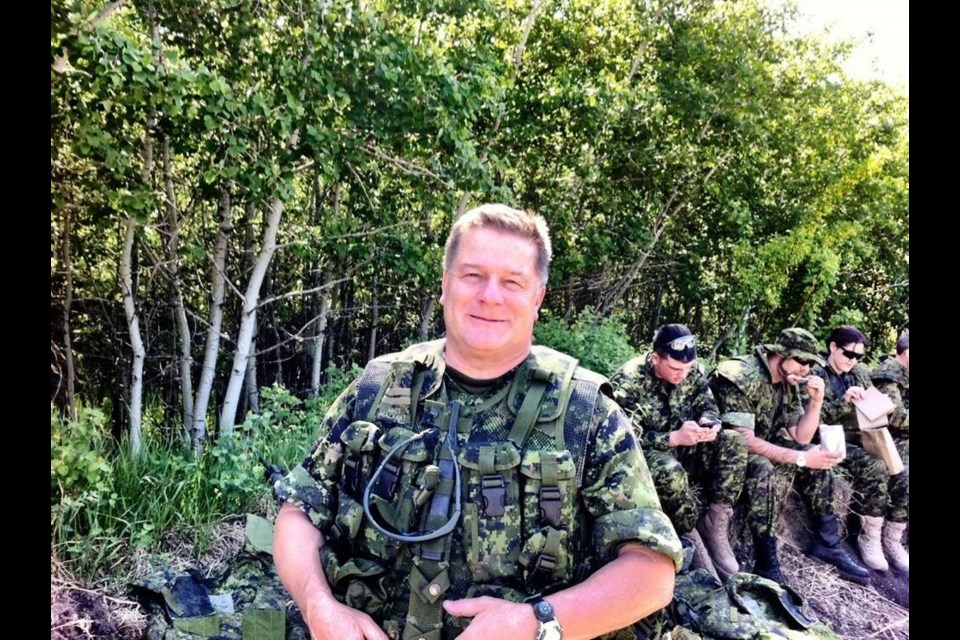Lt. Jim Parker always felt safe riding in a heavily armoured shuttle bus nicknamed Rhino that took him between military facilities while he was stationed in Kabul, Afghanistan.
A week after he had last taken it, however, the same bus was attacked by a suicide bomber, killing 18 people, including a 28-year-old who had been deployed with the Victoria-based lieutenant.
While he served in a non-combat role far from the front line, the war was never far away when he was there, from 2011 to 2012, said Parker, now 69 and retired in Victoria.
“When you travelled anywhere in the city, you were taught to be on high alert,” said Parker, who served 27 years with the Royal Canadian Navy.
“The drivers on the armoured vehicles taking us from place to place didn’t stop for anything. But you were always on the lookout, always asking: ‘The back end of that vehicle seems pretty low to the ground. Could it be loaded with explosives?’
Parker said that while the passengers hoped they wouldn’t encounter an ambush, the drivers, “who were armed to the teeth,” gave the impression they would welcome an opportunity to use the cache of guns and grenades they kept close at hand.
The 28-year-old Canadian soldier killed in the bus attack, Master Cpl. Byron Greff, was one of 159 Canadian Armed Forces personnel and eight Canadian civilians killed in the 13-year deployment in Afghanistan.
Greff, a member of the Princess Patricia’s Canadian Light Infantry, was killed shortly after he returned to Afghanistan, after a home leave to see his new baby.
Canada ended its combat role in Afghanistan in 2011, shifting to training the army and police force. The last Canadian service members left 10 years ago, on March 12, 2014.
Parker also thinks of friend Lt. Bill Turner, a former teacher and postal worker, who was 45 when the vehicle he was travelling in was destroyed by a roadside bomb in April 2006, just over a month after he was posted to Afghanistan.
While some returned physically unscathed, many bore mental wounds that will likely stay with them for the rest of their lives.
“People are still wearing it,” said Parker, who was a naval reservist training the Afghan army during his stint in the country. “It’s more accepted to open up and talk about it these days. The majority of us just get together informally and just deal with it.”
Parker said he was surprised to see a friend who had served in Afghanistan that he hadn’t seen for a while with a post-traumatic stress disorder service dog. “He didn’t exhibit any symptoms when he returned and so he got back to work. As I hear it, he retired and, with his mind free of all the work stuff, all the memories came percolating back.”
The veterans, and their families, keep on the lookout for any signs of trouble.
“My wife, Heather, mentioned that she noticed that I was grumpier than usual,” said Parker, an avid photographer and naturalist. “I assured her that it was all part of aging — but I know she is still watching me.”
About 40,000 Canadians were deployed to Afghanistan between .October 2001 and March 2014, making it the largest and longest mission undertaken by the Canadian Armed Forces since the Second World War.
In addition to the dead, about 2,000 were injured. One in 10 receive treatment for PTSD, with the experience blamed for the deaths of dozens since the conflict.
A ceremony on Tuesday at the British Columbia Afghanistan Memorial — across the street from Christ Church Cathedral, at the corner of Courtney and Quadra Streets — will mark the 10th anniversary of the end of the mission.
Following a navy tradition of ringing a ship’s bell for every vessel lost, organizers will ring a ship’s bell once for every eight names of the fallen.
The list will be read by Nanaimo’s Capt. Trevor Greene (Ret.), who sustained a traumatic brain injury following an axe attack while meeting with Afghan village elders in 2006.
The ceremony will be attended by Minister of Veterans Affairs Ginnette Petitpas Taylor and senior representatives from the navy, army and air force.
Also attending will be members of several Silver Cross families, in recognition of lost relatives.
A CC-130 Hercules aircraft from 442 Transport and Rescue Squadron Comox will fly past in salute.
The ceremony runs Tuesday from 2 p.m. to 4:30 p.m.
>>> To comment on this article, write a letter to the editor: [email protected]



